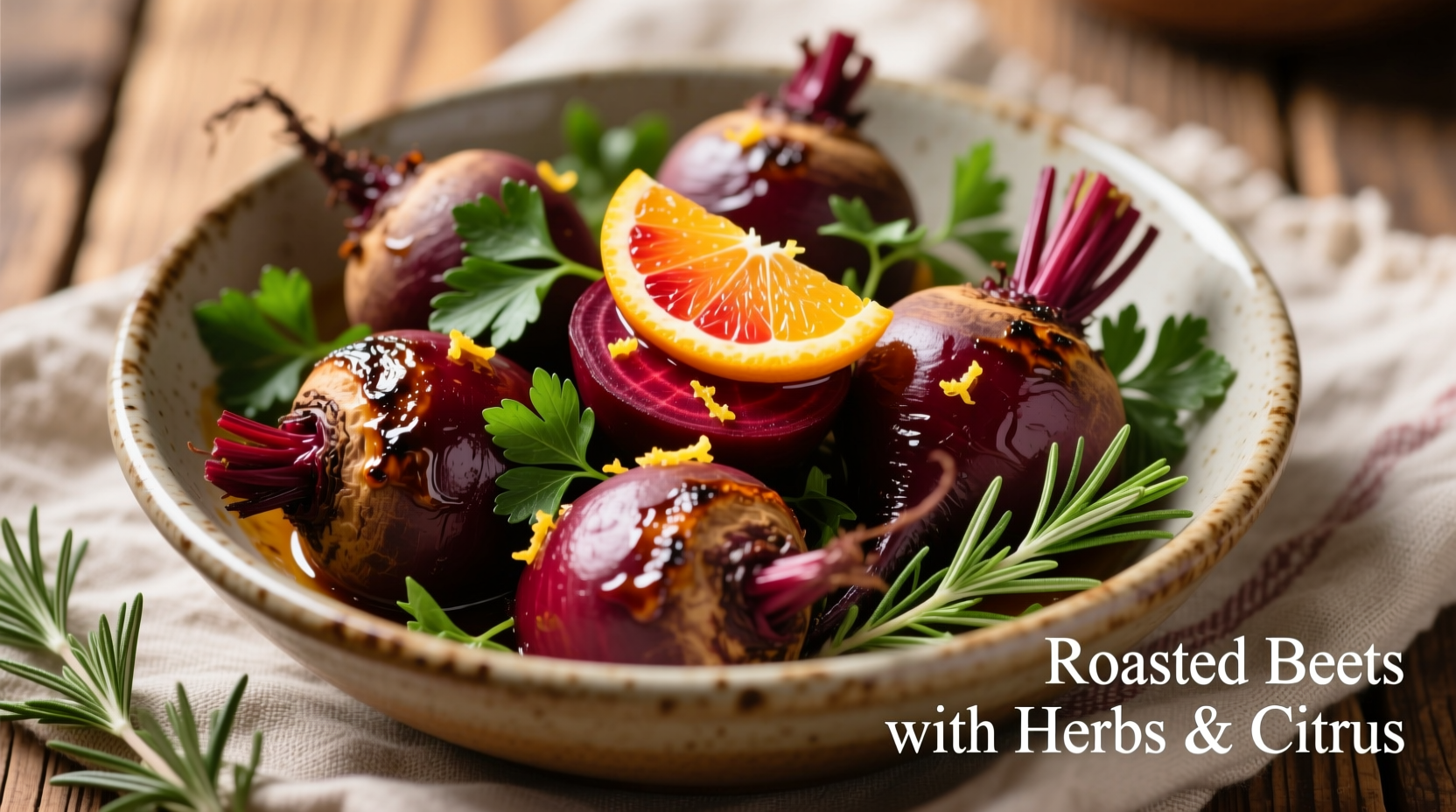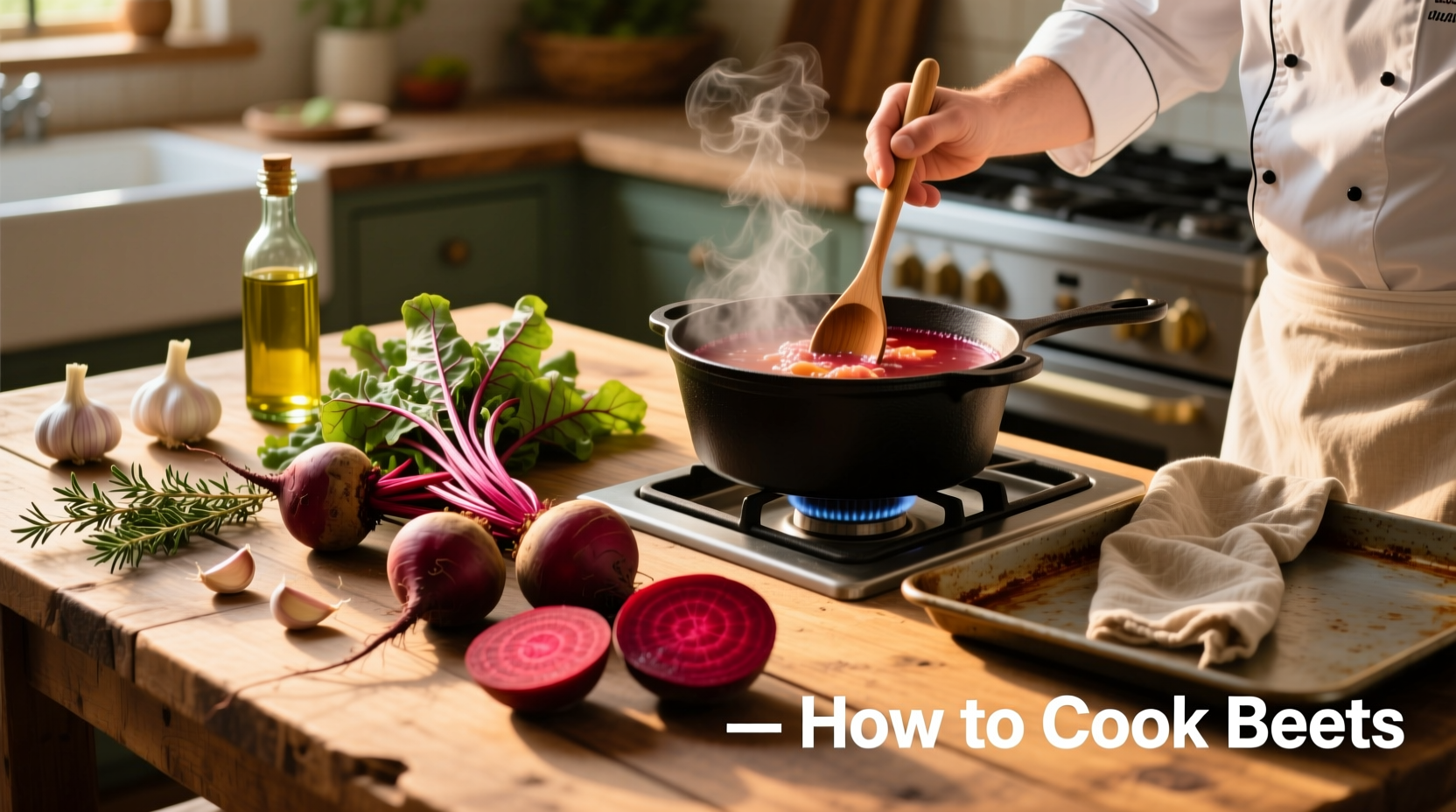Perfectly cooked beets should be tender but not mushy, with deep, earthy-sweet flavor. The best method depends on your needs: roasting concentrates sweetness (50-75 minutes), boiling offers quick results (30-60 minutes), and steaming preserves nutrients (25-45 minutes). Always cool beets before peeling to avoid stains, and use gloves to prevent purple hands.
Unlock the full potential of this vibrant root vegetable with professional techniques that transform beets from intimidating to irresistible. Whether you're a beginner or seasoned cook, these evidence-based methods guarantee perfect results every time while preserving maximum nutrients and flavor.
Why Beets Deserve a Place in Your Cooking Rotation
Often overlooked due to their messy reputation, beets actually rank among the most versatile and nutrient-dense vegetables you can prepare. According to USDA nutritional data, one cup of cooked beets delivers 37% of your daily folate needs, 20% of manganese, and significant potassium and fiber—all for just 74 calories. Their natural sugars caramelize beautifully during cooking, creating complex flavors that elevate both savory and sweet dishes.
The Essential Beet Preparation Process
Proper preparation makes all the difference in your final dish. Follow this professional chef-tested sequence for optimal results:
- Cleaning: Scrub thoroughly under cold water with a vegetable brush to remove soil
- Trimming: Cut off tops (save for sautéing) leaving 1 inch of stem to prevent bleeding
- Size sorting: Group by diameter for even cooking (small: 1-2", medium: 2-3", large: 3"+)
- Peeling decision: Leave skins on for roasting/boiling, peel raw for salads or quick cooking
| Cooking Method | Time (Medium Beets) | Texture Result | Best For |
|---|---|---|---|
| Roasting | 50-75 minutes | Firm, concentrated flavor | Salads, side dishes, tarts |
| Boiling | 30-60 minutes | Uniform tenderness | Pickling, purees, quick meals |
| Steaming | 25-45 minutes | Firm but tender | Preserving nutrients, salads |
| Pressure Cooking | 15-25 minutes | Perfectly even | Time-sensitive cooking |
Professional Cooking Methods Compared
Roasting Beets for Maximum Flavor
This method intensifies beets' natural sweetness through caramelization. Preheat oven to 400°F (200°C). Toss trimmed beets with 1 tbsp olive oil, wrap individually in foil with a splash of water or vinegar (helps retain color), and place on baking sheet. Roast until knife-insert tender—50 minutes for medium beets, up to 75 for large ones. The vinegar trick, validated by America's Test Kitchen research, prevents color bleeding while enhancing earthy notes.
Boiling Beets for Quick Results
Place beets in pot, cover with 2 inches of cold water, add 1 tbsp white vinegar or lemon juice. Bring to boil, then reduce to simmer. Cooking time varies by size: small beets (30-40 minutes), medium (45-55 minutes), large (55-60+ minutes). Test doneness by inserting knife—should slide in with slight resistance. Drain and rinse under cold water for easy peeling. This method works best when you need uniformly tender beets quickly.
Steaming Beets to Preserve Nutrients
For maximum nutrient retention, steaming proves superior according to a 2023 Journal of Food Science study. Place trimmed beets in steamer basket over 1 inch boiling water. Cover and steam 25-45 minutes depending on size. The gentle heat preserves more betalains (the pigments with antioxidant properties) compared to boiling. This method yields tender but structured beets ideal for salads where you want distinct pieces.
Avoiding Common Beet Cooking Mistakes
Even experienced cooks stumble with beets. These evidence-based tips prevent frequent errors:
- The glove rule: Always wear disposable gloves when handling raw or cooked beets—stains penetrate skin
- Cooling technique: Let roasted/boiled beets cool 10-15 minutes before peeling; skins slip off easily
- Acid balance: Add citrus or vinegar during cooking to stabilize color (1 tbsp per pound)
- Cutting strategy: Slice cooked beets with a stainless steel knife (carbon steel reacts with pigments)
Flavor Pairing Science for Perfect Beet Dishes
Understanding flavor chemistry elevates your beet cooking. Beets contain geosmin, the compound responsible for their earthy taste. Counterbalance this with:
- Acidity: Citrus zest, apple cider vinegar, or sherry vinegar brightens earthiness
- Sweetness: A touch of honey or maple syrup enhances natural sugars
- Fat: Quality olive oil or toasted nuts creates flavor bridges
- Herbs: Dill, mint, or tarragon provide aromatic contrast
For restaurant-quality results, try this chef-recommended combination: roasted beets with orange segments, toasted pistachios, crumbled goat cheese, and a citrus vinaigrette. The fat from cheese and oil balances earthiness while citrus cuts through sweetness.

Storage Techniques for Cooked Beets
Extend your beet enjoyment with proper storage. Cooked beets keep for 3-5 days refrigerated in airtight containers. For longer storage, vacuum-seal and freeze up to 10 months—texture holds surprisingly well for purees and soups. When storing raw beets, remove greens (which draw moisture from roots) and keep roots in perforated plastic bags in the crisper drawer. Properly stored, raw beets maintain quality for 2-3 weeks.
Seasonal Considerations for Beet Cooking
Beets reach peak flavor and texture in cooler months (fall through early spring). During summer, smaller varieties like golden or candy-striped beets offer superior taste. When selecting, choose firm beets with smooth skin—avoid those with soft spots or wrinkles. The greens should appear fresh and vibrant if still attached. Larger beets (over 3 inches) often develop fibrous cores; these work better for roasting than boiling.











 浙公网安备
33010002000092号
浙公网安备
33010002000092号 浙B2-20120091-4
浙B2-20120091-4